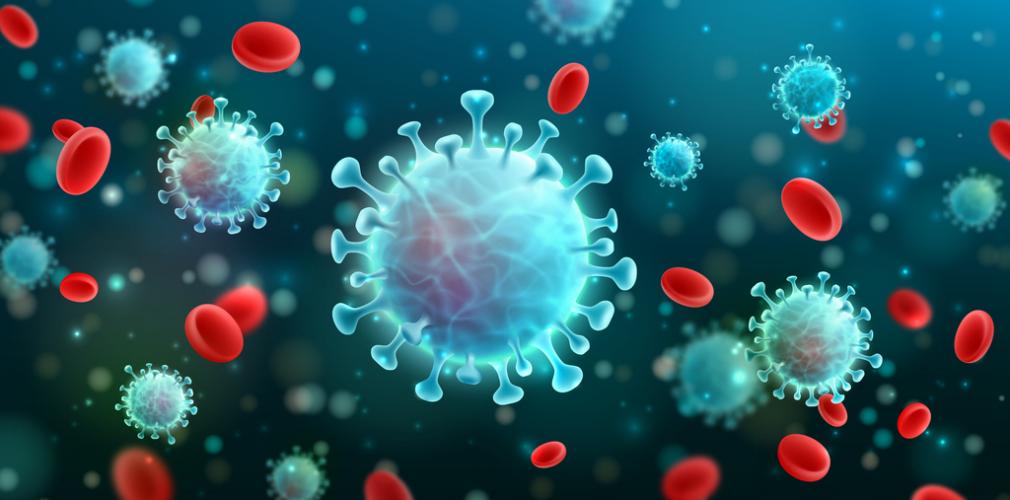Nowadays the subject of ‘viruses’ is on everyone’s lips, especially since the worldwide COVID-19 sanitary crisis erupted. In the world of plant organisms, a certain number of phytoviruses emerged in the United States a few years ago. These are now starting to become a real concern as they’re difficult to eradicate and are affecting cannabis crops significantly, leading to serious repercussions.

Indice
The origins of Hop Latent Viroid (HpLVd)
The legalization of recreational marihuana symbolizes a great advancement in the history of cannabis. Legalization was gradually implemented in different American states: first, in Colorado on November 6, 2012, and later in many other states, until finally reaching California on January 1, 2018.
Cannabis legalization entailed the free exchange of strains amongst growers, normally in the form of clones or seeds, although most commonly in the form of cuttings as these help maintain the distinctive features of different strains.
Just by preserving the mother plant of a specific variety, and then preparing the required number of clones, you can foresee and ensure both productivity and the specific characteristics of the final product.
But the biggest issue here is the fact that the exchange of clones amongst growers has considerably increased in California and other states. Sanitary conservation conditions vary greatly from one grower to another, and from one geographical area to the next, and this has led to the appearance of a phytovirus that greatly affects cannabis plants.
The use of clones is a cultural thing in California, and cannabis legalization has given way to the appearance of professional suppliers of marijuana clones who distribute their products across the length and breadth of the country. Some nurseries have been affected by the virus and have propagated it unknowingly, since this phytovirus can be latent in the plant for a long time without showing the slightest symptom.
The first Hop Latent Viroid (HpLVd) symptoms discovered in cannabis plants date back to 2013, and since 2014 propagation has been extremely fast.
Many growers started to spot worrying issues in their grows, but it wasn't easy for them to clearly identify this phytovirus at first sight.

The main protagonist: Hop Latent Viroid (HpLVd)
Hop Latent Viroid is in fact a viroid from the Carlavirus group, which penetrates the cells to reproduce and later takes control of the ARN polymerase. A viroid has a smaller and simpler structure than a virus.
This virus first appeared in the hop plant in 1988, but it must be noted that its effect on cannabis plants is much more devastating.
It is also known as PCIA (Putative Cannabis Infectious Agent) or 'Dudding'. A real virus which can bring disastrous consequences for many growers.
How to detect Hop Latent Viroid (HpLVd)?
Main symptoms include:
- Loss of 30% vigor during growth (slow growth, reduced size, discoloration and deformation of young leaves, abnormal nutrient absorption.)
- Flowering yield reduced by 30% (reduction of flower size and weight, decrease in resin production, aromatic intensity, flavor, and potency.)
- Overall deterioration in plant appearance (diseased plants.)
How to prevent propagation of Hop Latent Viroid in your grow?
We recommend applying the following hygiene measures:
- Keeping all trimming tools clean is key. These include scissors, scalpels, blades, or any other tool equipped with a blade.
- Don't ever touch a healthy plant after handling an infected plant, and make sure the leaves and branches of healthy and infected plants don't come into contact.
- Eradicate aphids and nematodes, as they can rapidly propagate this phytovirus.
- It is essential to thoroughly clean your growing space and all your equipment after every cycle.
- Limit clone exchange in your grow space to a minimum. Try to test every new strain in a separate confined space to avoid contamination of other strains or of your whole grow.

How to eradicate Hop Latent Viroid in marijuana cultivation?
Unfortunately, there is currently no effective biological or chemical treatment against Hop Latent Viroid. The only solution is the use of in vitro propagation techniques in labs, for instance meristem culture. This is the only effective remedy to fully and efficiently regenerate the specific features of the original strain.
But the problem is that this option is not within everyone's reach because not many people have the knowledge required to apply these complex regeneration techniques. In addition, the cost is extremely high, another reason that makes it unreachable for many growers. Without a shadow of a doubt, this is a subject that will require further development from now on…





Damn viruses are gonna get us all ;-{ one day }